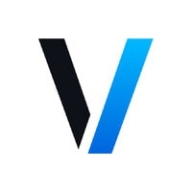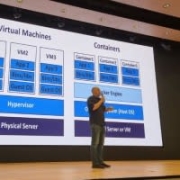

Veracode and Amazon EKS serve different aspects of software development and deployment, with Veracode focusing on application security and Amazon EKS on container orchestration. Amazon EKS appears to have the upper hand due to its seamless scalability and integration within the AWS ecosystem.
Features: Veracode includes robust security scanning, compliance reporting, and application vulnerability assessment. Amazon EKS offers scalability, tight integration with AWS services, and streamlined container orchestration capabilities.
Room for Improvement: Veracode can improve with a more intuitive dashboard, better user interaction, and clearer documentation. Amazon EKS could benefit from easier cluster management, enhanced documentation, and simplified operational processes.
Ease of Deployment and Customer Service: Veracode is known for a straightforward deployment process but has mixed reviews on customer support responsiveness. Amazon EKS is praised for extensive documentation aiding deployment but sometimes lacks in customer support quality.
Pricing and ROI: Veracode users find setup costs reasonable but suggest more competitive pricing. Amazon EKS is seen as relatively expensive, justified by its comprehensive features and high ROI through integration with AWS.
We have cost explorer available, and a bill forecast based on usage allows us to determine whether resources are underutilized or overutilized.
It's a fast deployment, with very good documentation, and it's really helpful.
I can recommend using it to save costs and for faster deployment, better performance, security, and easy clustering.
The scanners of Veracode bring status of the weaknesses in the current infrastructure. It scans and provides reports regarding the servers, the network, and the applications running on those servers.
Regarding price, the evaluation should focus on how efficiently they will recover their investment, considering the time saved through the use of Veracode Fix, for example, and the ability to fix code at dev time compared to the problems faced when fixing after the product is already deployed.
We have a paid subscription that provides priority support.
Amazon's technical support is quite good, especially for those who purchase support services.
Having to know what questions to ask is essential.
Access to the engineering team is crucial for faster feedback on the product fix process.
They are very responsive and quick to help with queries within our scope.
They respond very quickly since security is something critical.
The ability to scale based on requirements by deploying additional containers is a strong point for Kubernetes.
This allows us to scale our applications or APIs as needed, offering reliability through the automation of scaling processes.
It can scale very well according to needs, and it doesn't have any issues with scalability.
Cloud solutions are easier to scale than on-premise solutions.
It has a good capacity to scale effectively.
Amazon EKS is very stable, and when properly configured, I rate it ten out of ten.
Amazon EKS is stable.
If the Veracode server is down, we experience many issues during the scan.
It's not that easy to onboard, but once they have been onboarded on the platform, and the pipeline configured alongside the product configured, it works effectively.
Simplifying these will enable more people, not just those with strong foundational knowledge, to work effectively with these services.
Amazon EKS can be improved by having the maintenance of Kubernetes versions managed better, as everything is handled by the Kubernetes team and possibly a separate team at AWS.
Adding logging would be a valuable improvement.
If it could be integrated directly with code repositories such as Bitbucket or GitHub, without the need to create a pipeline to upload and decode code, it would simplify the code scan process significantly.
We had issues with scanning large applications. Scanning took a lot of time, so we kept it outside the DevOps pipeline to avoid delaying deployments.
A nice addition would be if it could be extended for scenarios with custom cleansers.
The pricing structure is beneficial for large companies who pay for what they use, but it is not affordable for startups.
Now, it stands at six or seven due to optimizing our workload.
That's the only reason that we're using it continuously because otherwise, we would have moved somewhere else.
It's not the most expensive solution.
If there's a security gap, you'll never know the cost or effect.
Pricing-wise, I find it a bit expensive because it's based on the number of users requesting access to Veracode.
The most beneficial aspect of Amazon EKS is that it helps manage the Kubernetes master node, so I don't need to maintain the master node, including tasks like upgrading.
The main benefits that I received from using Amazon EKS are that it is a managed cluster and offers simplicity.
By default, if you just install Amazon EKS, you can deploy your application, but to have it enterprise-ready, you have to configure a number of other things that will boost productivity.
It offers confidence by preventing exposure to vulnerabilities and helps ensure that we are not deploying vulnerable code into production.
The best features in Veracode include static analysis and the early detection of vulnerable libraries; it integrates with tools such as Jenkins.
It fixes issues directly in the IDE while you're doing it.


Amazon Elastic Kubernetes Service (Amazon EKS) is a fully managed Kubernetes service. Customers such as Intel, Snap, Intuit, GoDaddy, and Autodesk trust EKS to run their most sensitive and mission critical applications because of its security, reliability, and scalability.
EKS is the best place to run Kubernetes for several reasons. First, you can choose to run your EKS clusters using AWS Fargate, which is serverless compute for containers. Fargate removes the need to provision and manage servers, lets you specify and pay for resources per application, and improves security through application isolation by design. Second, EKS is deeply integrated with services such as Amazon CloudWatch, Auto Scaling Groups, AWS Identity and Access Management (IAM), and Amazon Virtual Private Cloud (VPC), providing you a seamless experience to monitor, scale, and load-balance your applications. Third, EKS integrates with AWS App Mesh and provides a Kubernetes native experience to consume service mesh features and bring rich observability, traffic controls and security features to applications. Additionally, EKS provides a scalable and highly-available control plane that runs across multiple availability zones to eliminate a single point of failure.
EKS runs upstream Kubernetes and is certified Kubernetes conformant so you can leverage all benefits of open source tooling from the community. You can also easily migrate any standard Kubernetes application to EKS without needing to refactor your code.
Veracode is a leading provider of application security solutions, offering tools to identify, mitigate, and prevent vulnerabilities across the software development lifecycle. Its cloud-based platform integrates security into DevOps workflows, helping organizations ensure that their code remains secure and compliant with industry standards.
Veracode supports multiple application security testing types, including static analysis (SAST), dynamic analysis (DAST), software composition analysis (SCA), and manual penetration testing. These tools are designed to help developers detect vulnerabilities early in development while maintaining speed in deployment. Veracode also emphasizes scalability, offering features for enterprises that manage a large number of applications across different teams. Its robust reporting and analytics capabilities allow organizations to continuously monitor their security posture and track progress toward remediation.
What are the key features of Veracode?
What benefits should users consider in Veracode reviews?
Veracode is widely adopted in industries like finance, healthcare, and government, where compliance and security are critical. It helps these organizations maintain strict security standards while enabling rapid development through its integration with Agile and DevOps methodologies.
Veracode helps businesses secure their applications efficiently, ensuring they can deliver safe and compliant software at scale.
We monitor all Container Security reviews to prevent fraudulent reviews and keep review quality high. We do not post reviews by company employees or direct competitors. We validate each review for authenticity via cross-reference with LinkedIn, and personal follow-up with the reviewer when necessary.